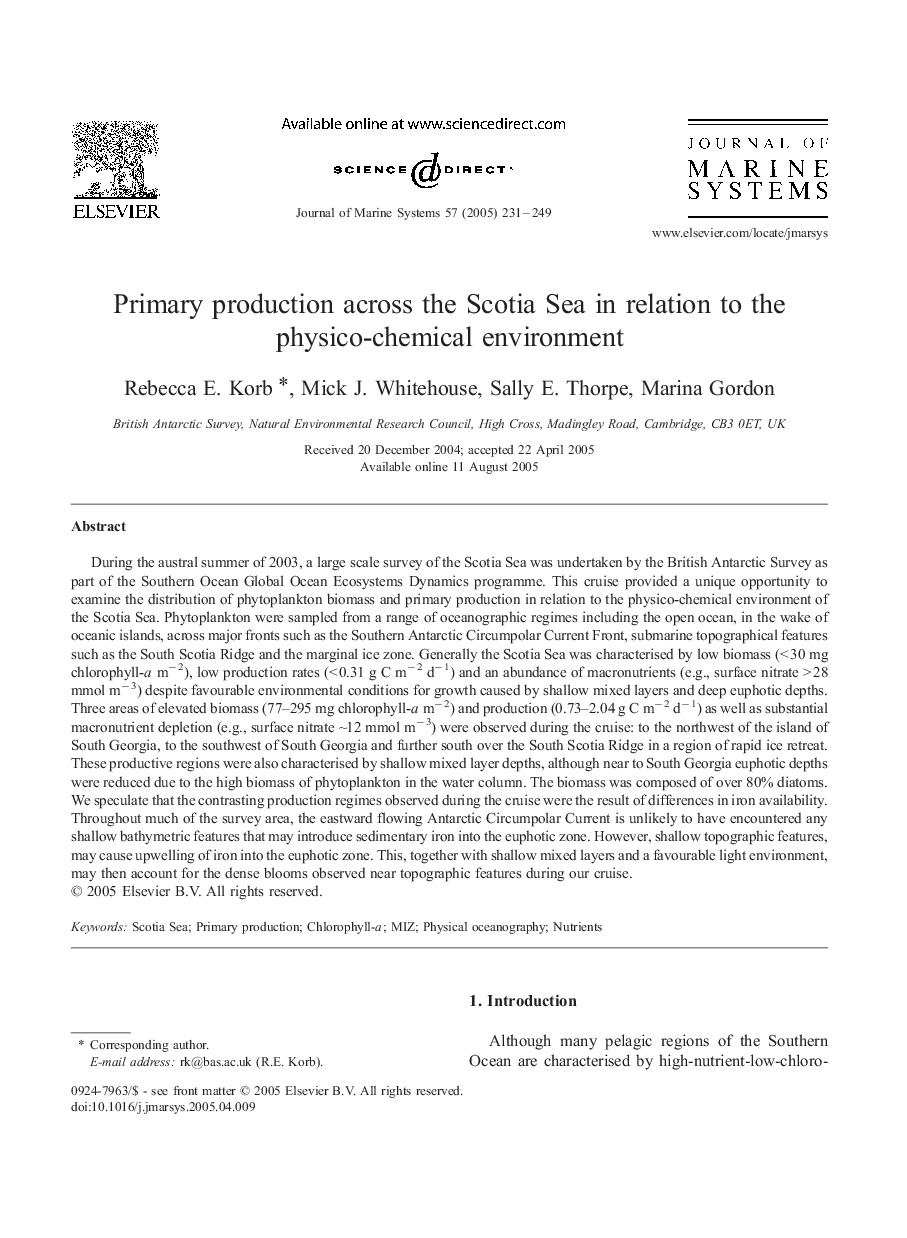| کد مقاله | کد نشریه | سال انتشار | مقاله انگلیسی | نسخه تمام متن |
|---|---|---|---|---|
| 9483407 | 1627372 | 2005 | 19 صفحه PDF | دانلود رایگان |
عنوان انگلیسی مقاله ISI
Primary production across the Scotia Sea in relation to the physico-chemical environment
دانلود مقاله + سفارش ترجمه
دانلود مقاله ISI انگلیسی
رایگان برای ایرانیان
کلمات کلیدی
موضوعات مرتبط
مهندسی و علوم پایه
علوم زمین و سیارات
اقیانوس شناسی
پیش نمایش صفحه اول مقاله

چکیده انگلیسی
During the austral summer of 2003, a large scale survey of the Scotia Sea was undertaken by the British Antarctic Survey as part of the Southern Ocean Global Ocean Ecosystems Dynamics programme. This cruise provided a unique opportunity to examine the distribution of phytoplankton biomass and primary production in relation to the physico-chemical environment of the Scotia Sea. Phytoplankton were sampled from a range of oceanographic regimes including the open ocean, in the wake of oceanic islands, across major fronts such as the Southern Antarctic Circumpolar Current Front, submarine topographical features such as the South Scotia Ridge and the marginal ice zone. Generally the Scotia Sea was characterised by low biomass (< 30 mg chlorophyll-a mâ 2), low production rates (< 0.31 g C mâ 2 dâ 1) and an abundance of macronutrients (e.g., surface nitrate > 28 mmol mâ 3) despite favourable environmental conditions for growth caused by shallow mixed layers and deep euphotic depths. Three areas of elevated biomass (77-295 mg chlorophyll-a mâ 2) and production (0.73-2.04 g C mâ 2 dâ 1) as well as substantial macronutrient depletion (e.g., surface nitrate â¼12 mmol mâ 3) were observed during the cruise: to the northwest of the island of South Georgia, to the southwest of South Georgia and further south over the South Scotia Ridge in a region of rapid ice retreat. These productive regions were also characterised by shallow mixed layer depths, although near to South Georgia euphotic depths were reduced due to the high biomass of phytoplankton in the water column. The biomass was composed of over 80% diatoms. We speculate that the contrasting production regimes observed during the cruise were the result of differences in iron availability. Throughout much of the survey area, the eastward flowing Antarctic Circumpolar Current is unlikely to have encountered any shallow bathymetric features that may introduce sedimentary iron into the euphotic zone. However, shallow topographic features, may cause upwelling of iron into the euphotic zone. This, together with shallow mixed layers and a favourable light environment, may then account for the dense blooms observed near topographic features during our cruise.
ناشر
Database: Elsevier - ScienceDirect (ساینس دایرکت)
Journal: Journal of Marine Systems - Volume 57, Issues 3â4, September 2005, Pages 231-249
Journal: Journal of Marine Systems - Volume 57, Issues 3â4, September 2005, Pages 231-249
نویسندگان
Rebecca E. Korb, Mick J. Whitehouse, Sally E. Thorpe, Marina Gordon,